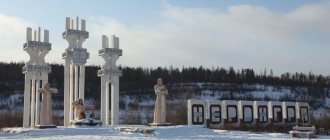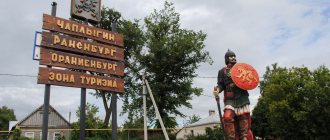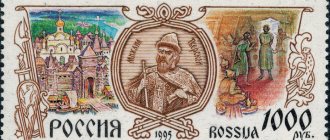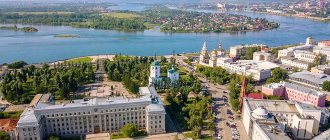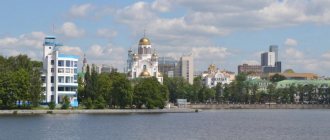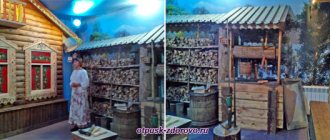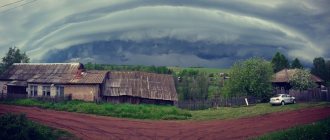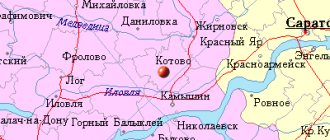- August 16, 2019
- Directions
- Molton
Orsk (Orenburg region) is the administrative center of one of the districts of the Orenburg region. It is spread over an area of 621.33 km2. This puts it among the ten largest cities in Russia by area. Orsk is divided into 3 administrative districts: Sovetsky, Leninsky and Oktyabrsky. The distance to Orenburg is 286 km. The nearest city is Novotroitsk. It is located west of Orsk. The article answers the question of where the city of Orsk is located.
The population is 230,414 people. Density – 370.8 people/km2. In terms of population and industrial development, it is in second place in the Orenburg region.
Geographical features
Where is the city of Orsk? Orsk is located on the southern foothills of the Ural mountain system. It is located at the confluence of the Ori and Ural rivers. The latter divides the city into western (European) and eastern (Asian) parts. The first is called the new city, and the second is the old city.
Time in Orsk is 2 hours ahead of Moscow. The city is located at an altitude of about 200 meters above sea level.
The climate in Orsk is quite harsh. Due to frequent intrusions of cold air from the Arctic through the Urals and the spread of a sedentary anticyclone, winter is quite severe. Summer, on the contrary, is quite hot. Annual precipitation is 322 mm. Most of them fall in June.
Both in exile and on a visit
— Let's return to the Orsk fortress. What happened to her then?
— And the Orsk fortress continued to be a center of trade. Let me remind you that it was located at the intersection of trade routes from Russia to Central Asia. In addition, due to the remoteness from the capital, “unreliable” people were exiled here. Among the famous personalities who went into exile here were a Polish student, a member of the secret organization “Black Brothers”, and later the first Russian orientalist Jan Vitkevich , artist and poet Taras Shevchenko , Petrashevite, philosopher Alexander Khanykov (buried in the Orsk fortress), some Decembrists.
— After all, not only exiled representatives of the intelligentsia visited Orsk. They say that Russian emperors also came here on visits...
- This is true. In 1837, Tsarevich Alexander Nikolaevich, the future Tsar Alexander II, visited Orsk. He was accompanied by the heir's tutor, the poet Vasily Zhukovsky. They stopped at the fortress, and Zhukovsky made a sketch in his travel diary - a church on the mountain.
By the way, this church appeared on the mountain in 1749. And the first church was founded in the Orenburg fortress. And she bore the name of Andrew the First-Called. But due to the river flooding, it had to be moved several times. In 1749, they built a semi-stone church on the mountain and gave it a new name – the Transfiguration of the Lord. But it was later destroyed.
On May 9, 1894, a stone church was laid, the bell tower of which has survived to this day. It was then called Nikolskaya in memory of the stay of Tsarevich Nikolai Alexandrovich, the future Emperor Nicholas II, in these parts. He arrived in Orsk in 1891. I visited the Transfiguration Cathedral, then the house of the merchant Nazarov, where he received the local delegation. And in 1894 Nicholas became king. And on the emperor’s name day, Nazarov organized celebrations and decorated the facade of his house. The building has survived to this day.
— And when did the city of Orsk itself emerge?
— In 1861, the Orsk fortress became the village of the Orenburg Cossack army. And in May 1865, when a new administrative division was carried out in Russia, the Orsk district was established, and the village began to be called the city of Orsk. The treasury, police department, postal and telegraph office and other public places were created here.
Economy
The economy of Orsk is formed in accordance with where the city of Orsk is located. And it is located in the ore (or rust) belt of the country - in the Urals. Therefore, the economy of this city is based on industry, especially that focused on ore mining and processing. In terms of production volumes, Orsk is in second place in the Orenburg region. The most developed sectors are food, petrochemical, engineering, mining, light industry and metallurgy. There is a solar power plant in Orsk, which is still a rare occurrence in our country.
How Ivan Kirillovich quarreled with Vasily Nikitich...
...And because of this they renamed the Orenburg fortress
— So, the history of Orsk began in 1735 with the Orenburg fortress. And from this fortress our city subsequently grew. But how did it happen that he changed his name?
— I already said that Ivan Kirillovich Kirilov never returned here. He died on April 14, 1737 in Samara and was buried there. The Orenburg expedition was led by Vasily Nikitich Tatishchev. He arrived at the fortress in the summer of 1738.
Tatishchev built the first exchange yard in the Orenburg region here. And he sent a report to the empress that Kirilov had chosen a bad place for the city. That it is filled with water, that there are no building materials here. But historians are inclined to believe that one of the reasons for this message was personal hostility between Tatishchev and Kirilov.
Vasily Nikitich proposed moving the city of Orenburg. And he was, indeed, moved 180 versts, to the Krasnaya Gora tract. In August 1739, a corresponding decree was issued. Since then, the fortress at the mouth of the Ori was called Orskaya. But until 1741, local residents secretly called it Orenburg.
- But present-day Orenburg is much further away.
- And it was moved twice. Tatishchev was replaced as head of the expedition by Urusov, and he was replaced by Neplyuev. Ivan Ivanovich Neplyuev became the first Orenburg governor. He didn’t like the second place chosen by Tatishchev either. And he moved Orenburg to the mouth of the Sakmara River, to where it is now. That’s why Orenburg is called thrice-born.
Problems of the city of Orsk
Those considering moving to this city should keep in mind that it has the highest HIV infection rate in the country. There are over 8,000 people with AIDS in the city, which is as much as 3.5% of the total number of city residents.
Orsk is one of the most environmentally polluted cities in Russia. It is in 8th place in this indicator. Large enterprises are located right next to residential areas. There are over a dozen of them! Each of them releases its own “cocktail” of different chemicals. All this has led to an increase in morbidity, in particular cancer and respiratory diseases.
"New Russia" of old times
— Tatyana Grigorievna, let's talk about the history of Orsk - from the very beginning. ORSK Internet portal . RU , but also to the Orchan people themselves. After all, there are many interesting moments in the past of our region.
— Orsk was founded in 1735, on August 28 according to the new style or on August 15 according to the old style. The city was founded by Ivan Kirillovich Kirilov, a famous geographer and cartographer of the first quarter of the 18th century. Kirilov was the first head of the Orenburg expedition, which, in fact, erected the Orenburg fortress here (from the name of the Or River). It was about four bastions and a small citadel on the mountain.
Kirilov's expedition included many scientists. On August 6 (old style), 1735, researchers arrived at the mountain, which was called among the local peoples Namaztau, that is, prayer mountain. Since the Feast of the Transfiguration of the Lord is celebrated on August 6 (Old Style), the mountain was named Preobrazhenskaya.
— Why did you decide to build here?
— The site for the fortress was not chosen by chance. At the mouth of the river is a convenient place to settle, at the intersection of trade routes. The second function is protective. After all, the fortress was located near the southeastern border of the Russian state. On the left bank of the river there were Kazakh territories, and on the right bank - Russian ones.
On August 31 of the same 1735, one and a half miles from the first fortress, Orenburg was laid with stone. In the new location it was planned to build a city with nine bastions. But Ivan Kirilov was not destined to return to these lands...
— But the location chosen for the first fortress had another advantage?
- Absolutely right. It is not for nothing that the expedition also included geologists. In our area, silver ores were found and deposits of stones were discovered: porphyry, marble and jasper. From this time on, local jasper became known, which later became the famous Orsk jasper.
After laying the foundation of the city, Kirilov sent a report to Anna Ioannovna, in which he congratulated the empress on the acquisition of “New Russia,” rich in mineral resources.
Orsk Administration
The city has an official website, which provides up-to-date information on various issues, including those regarding the administration. The city administration is located at the address: 462419, Russia, Orsk, Lenin Ave., building 29. On the website you can see the phone number and email. There you can also get acquainted with the administrations of each district, see current vacancies, the structure of the administration and its leaders. The site also presents regulatory legal acts to which the administration’s powers are associated.
Popular message topics
- Everyday life
Adolescence is very active in the search for new sensations, educational ideas, and spending leisure time simply in the company of friends. All these processes are explained by the physiology and psychology of youth. - Mink
Mink is a predatory animal with valuable fur, belonging to the mustelidae family. Lives near the river bank. Spends most of its time on land. This animal is capable of swimming and diving well, as well as moving along the bottom of reservoirs, - Life and work of Yesenin
We become acquainted with the work of Sergei Yesenin in early childhood, reading his poem “Birch”, where all the lines show love for one’s home, and the birch tree personified the Russian beauty of Russia.
“Rename the city of the steppe fists to the city of the iron people’s commissar.” How Orsk almost changed its name
It could be so!
Founded in 1735, Orsk was originally named Orenburg. But 6 years later, Orenburg was moved to another place, and the already existing fortress was called Orskaya. The city still bears its middle name. But not everyone knows that in 1937 it almost received a new name. Orchan residents then found themselves half a step away from becoming... Ordzhonikidzevites!
Glorious tradition
On the territory of the USSR there were many cities named after the leaders of the revolution. Usually, “grad”, “sk” or “bad” were added to surnames (pseudonyms). This is how Leningrad (St. Petersburg), Stalingrad (Volgograd), Sverdlovsk (Ekaterinburg), Voroshilovgrad (Lugansk), Leninabad (Khujand) and so on appeared.
Sometimes everything turned out to be even simpler, and the settlement was given a surname without any additions: Kuibyshev (Samara), Frunze (Bishkek), Kalinin (Tver). There are cities that still bear these names - Kirov, for example, they are going to rename them back to Vyatka, but they still can’t get it together...
In general, practice in this regard is very rich. What can I say, in late Soviet times Naberezhnye Chelny became Brezhnev for a while! And 82 years ago, Orsk also almost fell into this company and was not renamed Ordzhonikidze.
Personality of the “Iron Commissar”
The fact is that in February 1937, Grigory Konstantinovich Ordzhonikidze, a prominent Bolshevik, known in the party under the nickname “Iron Sergo,” died in Moscow.
Sergo Ordzhonikidze
From birth, he was a small-scale nobleman, but from the poor, almost beggars, which was not so rare in the Caucasus: his father plowed the land himself, planted corn himself, and also worked part-time in a mine - hauling ore on oxen. Already in 1903, the very young Gregory joined the RSDLP, was soon arrested, and in a Baku prison he met a young revolutionary named Koba - Joseph Stalin. I met the October Revolution as a member of the executive committee of the Petrograd Soviet. He fought against Denikin during the Civil War and held senior leadership positions after it.
Anastas Mikoyan, Joseph Stalin, Grigory Ordzhonikidze in 1925
In 1930 he became chairman of the Supreme Council of the National Economy, then - People's Commissar of Heavy Industry. In fact, this position brought him closer to Orsk (which, however, he had never personally visited): it was Sergo who oversaw the construction of most of the local industrial giants.
On February 18, 1937, 51-year-old Ordzhonikidze died. The official version is from cardiac arrest, but even then they were saying that he either shot himself or was shot. There are grounds for such suspicions - one of Stalin’s closest friends, one of the few who was on first name terms with the leader, has recently fallen into disgrace.
Stalin carries the coffin with the body of Ordzhonikidze. February 1937
Not long before this, his older brother was shot; two months earlier, the assistant commissioner for local construction projects, Sergei Frankfurt, was arrested in Orsk. By the way, Ordzhonikidze’s wife also fell under the rink of repression: a year after his death (suicide? murder?), the widow received 10 years in the camps...
Funeral on Red Square. Behind the crowd are the towers of GUM
Be that as it may, Sergo was buried with honors, the ashes were walled up in the Kremlin wall. Crowds of mourning people gathered on Red Square... They also gathered in Orsk.
The best and favorite student of Comrade Stalin
Just two days after Sergo’s death, Orchan residents began holding mourning rallies: at every enterprise, in every institution, simply on the streets. The minutes of these meetings are still stored in a special folder in the Orsk branch of the Orenburg State Archive.
Minutes of the nickel workers' meeting
Here, for example, is the resolution of the nickel workers’ meeting:
- We, the construction workers of the Nickel Plant, 400 people gathered for the rally, with deep pain and anger share with the Bolshevik Party the great loss of a fiery tribune, a devoted revolutionary, a favorite of the people, our GRIGORY KONSTANTINOVICH ORDZHENIKIDZE... We, the builders of the Orsk Nickel Plant, We appeal to the government of the USSR to rename the city of ORSK, a city in the past of steppe kulaks, to the city of ORDZHENIKIDZE in the Urals.
Two facts are puzzling here. Firstly, why did the workers receive the news of Sergo’s death “with anger” if he died from natural causes? What were you angry about – the People’s Commissar’s weak heart muscle? Secondly, the nickel workers persistently misspelled his name: “Ordzhenikidze”, not “OrdzhOnikidze”. It’s strange - they decided to name the city in his honor, but they didn’t figure out what exactly... However, the Georgian surname is really unpronounceable, so people are confused.
A rally was also held at the meat processing plant:
- 525 people... unanimously decided to ask the Soviet Government to perpetuate the memory of Comrade SERGO to rename the city of Orsk to the city of “SERGO ORDZHONIKIDZE”.
Even so? Not just “Ordzhonikidze”, but specifically “Sergo Ordzhonikidze”? A bit long...
And here is what the loaders of the supply department of the Zemtransstroy office wrote to Stalin:
“The hardest work, the fight against the enemies of the party and the people, the Trotskyist bandits and their right-wing accomplices, undermined the health of Sergo, dear to us. The despicable enemies of the party, the restorers of capitalism, will never be able to break the power of our party...
Well, it became clear where that very anger came from: for the fact that the People’s Commissar’s heart could not stand it, the Orsk workers blamed the Trotskyists and other despicable public, who (it was in the yard for 1937) were called to account en masse. By the way, Sergo himself, as historians say, did not approve of the course of intensifying repression; this was supposedly the reason for their conflict with Stalin.
Signatures on the back of one of the resolutions
Similar resolutions were submitted by teams of other enterprises and organizations. We won’t list everything here, they are not much different from each other (you can see the original documents in the photo gallery under this article), but we will write down the most emotional or unusual fragments:
- Another fighter has left the glorious Leninist guard... Death has torn out the beloved heart of the people... Comrade STALIN, you have lost your best and beloved student and friend of your life and struggle together... WE ASSURE you, comrade. STALIN, that to the death of Comrade. We respond to ORDZHONIKIDZE by uniting our ranks around YOU, comrade. STALIN... Baring our heads over the coffin of our faithful friend and comrade-in-arms, Comrade. STALIN, the faithful son of the Lenin-Stalin Party, let us closely unite around the All-Union Communist Party (Bolsheviks)...
The result of this was a letter signed by the Chairman of the City Council Ivan Bondovsky (he was arrested for sabotage 4 months later), sent to Orenburg:
— The construction of such important facilities as the Nickel Combine, thermal power plant, Cracking, etc., was personally carried out by Sergo himself, and this could not help but connect the working people of the city and new buildings with him... He was the banner of the struggle for the construction of a new industrial base... The City Council asks the Regional Executive Committee to initiate a petition to The government on renaming Orsk to the city named after ORDZHONIKIDZE...
Draft letter with edits and original signatures
Instead of a city - a street and a village
However, the renaming never happened. Why would that be, I wonder? A year later, Orenburg was happily named Chkalov, although the famous pilot had nothing to do with him at all. And other cities were renamed all the time!
Probably, the point is still in the difficult attitude of the leadership (and Stalin personally) towards the deceased. There is information that after Sergo’s death, the leader of the people harshly criticized his report “On the lessons of sabotage, sabotage and espionage of Japanese-German-Trotskyist agents,” which was supposed to be presented in March at the plenum of the Central Committee, and in general had many complaints against the deceased. Yes, they buried him with honors, but giving a city as a gift is too much...
View of Revolution Square (now Kirilova) from Ordzhonikidze Street, 1939. Photo OKM
But it was impossible to completely ignore such a massive impulse from the working people. Therefore, on February 27, Ordzhonikidze Street appeared in Orsk - it still bears this name.
City Council decision dated February 27, 1937
By the way, at that moment it was Milyutin Street - it was named in honor of the first People's Commissar of Agriculture Vladimir Milyutin, who just in 1937 turned out to be an enemy of the people, so it “luckily” coincided...
However, one settlement in the USSR still bears the name of Iron Sergo. This is the former Crimean village of Kaigador, which is located in the urban district of Feodosia.
Urban-type settlement Ordzhonikidze in Crimea. Photo News-Crimea
Now 2.5 thousand people live in Ordzhonikidze, but during the holiday season the population grows significantly...
Ural56.Ru thanks the branch of the State Budgetary Institution “State Archive of the Orenburg Region” in the city of Orsk and personally the director Inna Ershova for their assistance in preparing the material.
Climate
Orsk is located in a zone of sharply continental climate. Therefore, the city is characterized by cold, rather long winters and hot, sometimes dry summers. The temperature difference between seasons is up to 85 degrees. Summer lasts about 3 months, from early June to early September. At this time of year there is little rainfall and droughts are common. The average temperature in July is 21 degrees Celsius. Winter lasts from mid-November to mid-April. Snow cover lasts about 140 days a year. On average, the temperature in January is around minus 12 degrees. Spring and autumn are short in the region. In spring, winds often blow, snow melts rapidly, and floods occur.
Employment
The Employment Center (Orsk) constantly monitors the unemployment situation. The official figure is 1.4%, which is generally within the national average. But the problem is that the recent decline in unemployment does not reflect the real situation. More and more city residents do not go to the stock exchange in search of work, as they do not see any prospects for themselves. Social protection of the population of Orsk notes that the standard of living of people is greatly declining and that unofficial unemployment remains at approximately 3-4%. The main problems in the field of employment in Orsk are the low demand for people with higher education. This especially applies to middle-aged women, for whom there are almost no jobs in the city.
Coat of arms
The coat of arms of Orsk is presented in the form of a shield. Above him rises a silver tower crown with three visible prongs. On a silver background there is a scarlet mountain with three peaks. A black eagle sits on it. His head is facing to the viewer's right. The creature is depicted with lowered wings, a golden beak and an 18th-century imperial crown. The shield is framed with a red ribbon (azure color is allowed).
The artistic composition was approved by the Meeting of City Representatives on August 23, 1995. Included in the State Heraldic Register of the Russian Federation under No. 967. The author of the coat of arms is V.S. Miloradov.
Population
It is known that in 1866 about 3 thousand people lived in Orsk. They began systematically counting the population of Orsk in 1897. At that time 14 thousand people lived here. The first noticeable positive jump in the number of city residents occurred in the early 30s, when industrialization began in Orsk and several large industrial enterprises were built. The second significant increase was recorded in the post-war years, when a large number of specialists and workers came to work at the numerous enterprises that were evacuated and remained in the city.
In the subsequent Soviet years, the population of Orsk grew slowly but steadily. A slowdown in the increase in numbers occurs during the years of perestroika. And in 1989, they even recorded a negative trend in the number of residents. Since the late 90s, the population of Orsk began to decline by several thousand annually. At the beginning of 2016, 231 thousand people lived in the city. Orsk ranks 87th in terms of population among all Russian cities.
Orsk infrastructure
The city has good transport connectivity. It has a railway line and an airport of international status. The quality of roads in Orsk has noticeably improved in recent years, although traffic jams, like throughout the country, still exist. The population of Orsk is well provided with educational, healthcare and cultural enterprises. New housing is constantly being built in the city, although apartment prices are quite high, while wages in Orsk are below the national average.
The city has a well-developed sphere of physical education, sports and leisure. The city's infrastructure provides residents with fairly comfortable living, but the main problem - low incomes - does not always allow residents to use these facilities to the fullest. The Center for Social Support of the Population of Orsk notes that in the last year the number of people seeking help due to declining incomes has increased.
